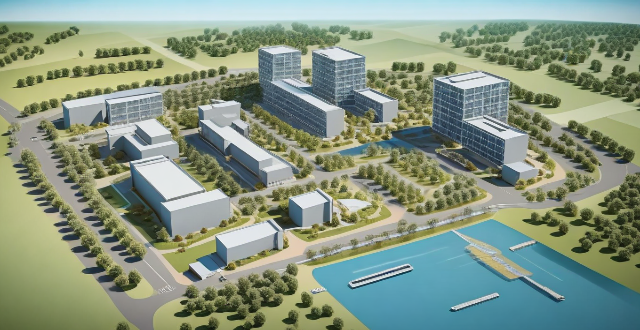Ecological design strategies are vital for combating climate change. They promote sustainable practices, reduce environmental impact, and create harmonious living conditions that minimize resource consumption. Key strategies include enhancing energy efficiency, promoting renewable energy sources, reducing water consumption, optimizing land use and biodiversity, waste reduction and recycling, carbon sequestration and storage, and community-scale sustainability. By implementing these strategies, we can create more sustainable environments and mitigate the effects of climate change.

How Ecological Design Strategies Help Combat Climate Change
Ecological design strategies play a crucial role in combating climate change by promoting sustainable practices and reducing the environmental impact of human activities. These strategies focus on creating buildings, landscapes, and communities that work in harmony with natural ecosystems and minimize resource consumption. Here's how ecological design strategies help combat climate change:
1. Enhancing Energy Efficiency
- Passive Solar Design: Incorporating elements like large windows, solar panels, and thermal mass materials can significantly reduce energy needs for heating and cooling. This reduces fossil fuel consumption and greenhouse gas emissions.
- Insulation and Airtight Construction: Proper insulation and airtight construction prevent heat loss in winter and heat gain in summer, further reducing energy demands for heating and cooling.
2. Promoting Renewable Energy Sources
- Solar Power: Integrating solar panels into building designs can provide clean energy for electricity and hot water, reducing reliance on non-renewable energy sources.
- Wind Energy: In suitable locations, using wind turbines can supplement or replace traditional power sources, contributing to a reduction in carbon emissions.
3. Reducing Water Consumption
- Rainwater Harvesting Systems: Collecting and reusing rainwater for irrigation and other non-potable uses reduces demand on local water supplies and lowers the energy needed for water treatment and transport.
- Low-Volume Irrigation Systems: Using efficient irrigation systems like drip irrigation reduces water waste, saving this precious resource for other uses.
4. Optimizing Land Use and Biodiversity
- Native Plant Landscaping: Using native plants in landscaping requires less water and maintenance, supports local wildlife, and helps sequester carbon.
- Green Roofs and Walls: These features not only contribute to thermal regulation of buildings but also create habitats for urban wildlife, increasing biodiversity in cities.
5. Waste Reduction and Recycling
- Building Materials: Choosing recycled, sustainably sourced, or low-carbon building materials reduces the environmental footprint of construction projects.
- Waste Management: Incorporating composting facilities and recycling stations within building designs encourages responsible waste management practices among occupants.
6. Carbon Sequestration and Storage
- Tree Planting and Forestry: Incorporating tree planting initiatives around buildings not only improves aesthetics but also helps absorb atmospheric CO2, acting as a natural carbon sink.
7. Community-Scale Sustainability
- Eco-Neighborhoods: Designing communities with shared green spaces, community gardens, and collective renewable energy systems fosters a culture of sustainability and reduces individual carbon footprints.
- Transportation Planning: Including bicycle paths, pedestrian zones, and easy access to public transportation in community designs reduces reliance on personal vehicles, decreasing emissions from transportation.
By implementing these ecological design strategies, we can create more sustainable environments that not only reduce our impact on the planet but also promote healthier living conditions for all inhabitants. It's an essential step towards a future where humans and nature coexist harmoniously, working together to mitigate the effects of climate change.